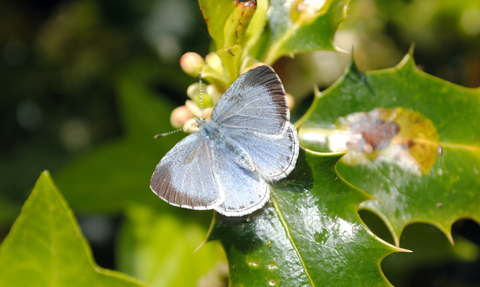
Holly Blue ©Amy Lewis
North Somerset Council Rewilding Champions
Introduction
North Somerset is getting wilder. From vibrant verges to parks and playing fields, patches of grassland that were previously cut short will now be blooming with life. We worked with North Somerset Council to engage and upskill communities to support biodiversity monitoring efforts on these rewilded sites, so we can demonstrate the impact of changing land management practices.
North Somerset Rewilding Champions (https://youtu.be/hsYTf02OXx8)
Created by Woven Films
Where we're working
There are now volunteer groups established in the following areas, who meet regularly during the surveying season to monitor the plants, pollinators and other invertebrates that are thriving in their local wild patches.
Clevedon
In Clevedon, tree planting has taken place at either end of the playing field at Hazell Close and the woodland at Strawberry Hill has been extended. These trees are a mix of native species which have been planted to create a diverse habitat, improve air quality and in places reduce noise pollution from the M5.
Elsewhere, wild spaces have been created near the leisure centre on Strode Road and verges around the town have been allowed to grow. All these spaces have been carefully selected to enhance the local environment whilst avoiding disruption to driver visibility or access to these green areas.
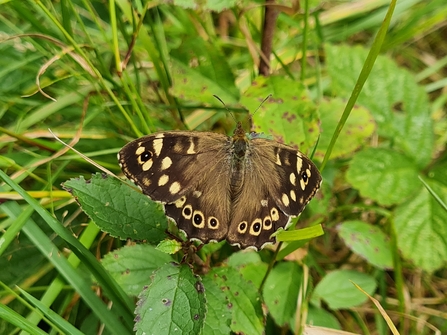
Nailsea
Several areas on the outskirts of Nailsea saw real change already in the first year of longer grass management. Grassland is growing longer and tree planting has taken place on the vast green expanse of Elm Farm, along Nailsea Park and beside the ambulance station too.
These trees are a mix of native species which have been planted to create a diverse habitat and improve air quality, and paths cut through the wilder patches mean people and pollinators can walk side by side.
All these spaces have been carefully selected to enhance the local environment whilst avoiding disruption to driver visibility or access to these green areas.
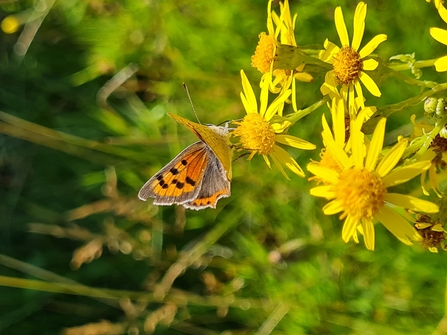
Portishead
In Portishead, Kilkenny fields have been transformed by tree planting in some sections, whilst in others long grassland is already buzzing with life. These habitats really add to the fields which are popular with dog-walkers, complimenting the views across the Severn to South Wales.
Other wild patches can be found near the marine lake and Portishead Point, at Merlin Park and Welly Bottom. The trees planted are a mix of native species which have been planted to create a diverse habitat and improve air quality.
There are also other areas growing wilder around Portishead, where conservation has long been a key concern of many residents.
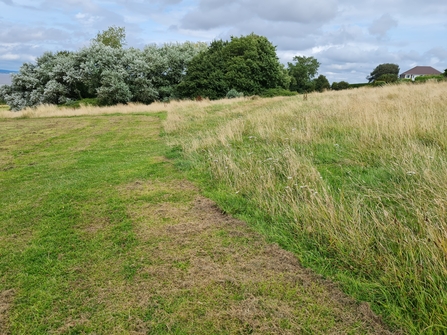
Weston-super-Mare
The largest town in North Somerset, there is plenty of potential for wilder patches to pop up all around Weston-super-Mare. Sure enough, from roadside verges to popular public spaces, pollinators and other wildlife are beginning to benefit from these changes.
Grassland is growing longer at a series of sites across the town and tree planting has taken place around Hutton Moor Leisure Centre and in the corner of the playing field behind Weston Youth Centre.
Worle is also getting wilder, with trees planted at Lynch Farm Park and Castle Batch, where a large area of grassland will be buzzing with life this summer.
The trees are a mix of native species which have been planted to create a diverse habitat and improve air quality. All these spaces have been carefully selected to enhance the local environment whilst avoiding disruption to driver visibility or access to these green areas.
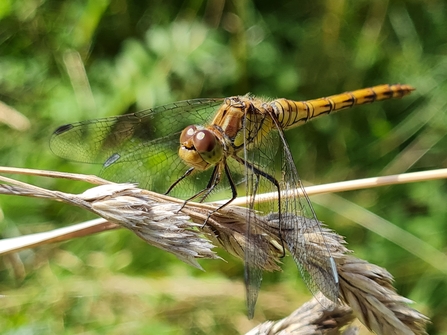
Resources
As part of the legacy of this project, we want people to feel informed and empowered to continue identifying and monitoring their local wildlife. Read our blogs and watch our webinars to get inspired!
Volunteers can also download our survey recording sheets, to help with their biodiversity monitoring:
Blogs

Monitoring during the spring, summer and autumn: A North Somerset Rewilding Champions blog
Arthur takes us through his experience of monitoring biodiversity across North Somerset throughout the surveying seasons.
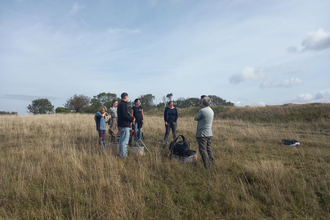
My time as a project assistant: A North Somerset Rewilding Champions blog
It’s been a busy 4 months! I have been trying for years to gain a career in conservation, in particular with The Wildlife Trusts. This…
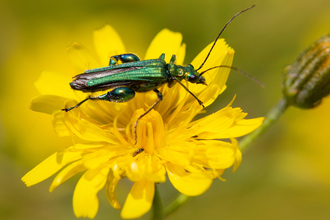
Flower power - Getting to know the thick-legged flower beetle: A North Somerset Rewilding Champions blog
You might be aware that pollinators are vital to our diet and their own respective ecosystem, and that beetles are strange and beautiful…

How well do you know nettles? A North Somerset Rewilding Champions blog
Stinging nettles are one of our most underappreciated plant species, likely due to their reputation as painful weeds. But the humble…

Thistles - Not just a prickly menace! A North Somerset Rewilding Champions blog
Everyone has heard of and seen thistles, and - if they have been unlucky enough - felt them too!
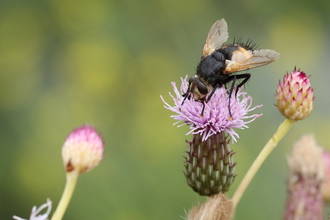
Diptera and the mysterious bee-fly: A North Somerset Rewilding Champions blog
What does it mean to be a fly? True flies are a group of insects, which are characterized by their two wings. That gives them the name…
Rewilding North Somerset
The ongoing decline in biodiversity across the UK is without doubt one of the biggest challenges we face – both globally and here in the…
Webinars
Butterfly identification webinar
Bee identification webinar
Grass identification webinar
Wildflower identification webinar


